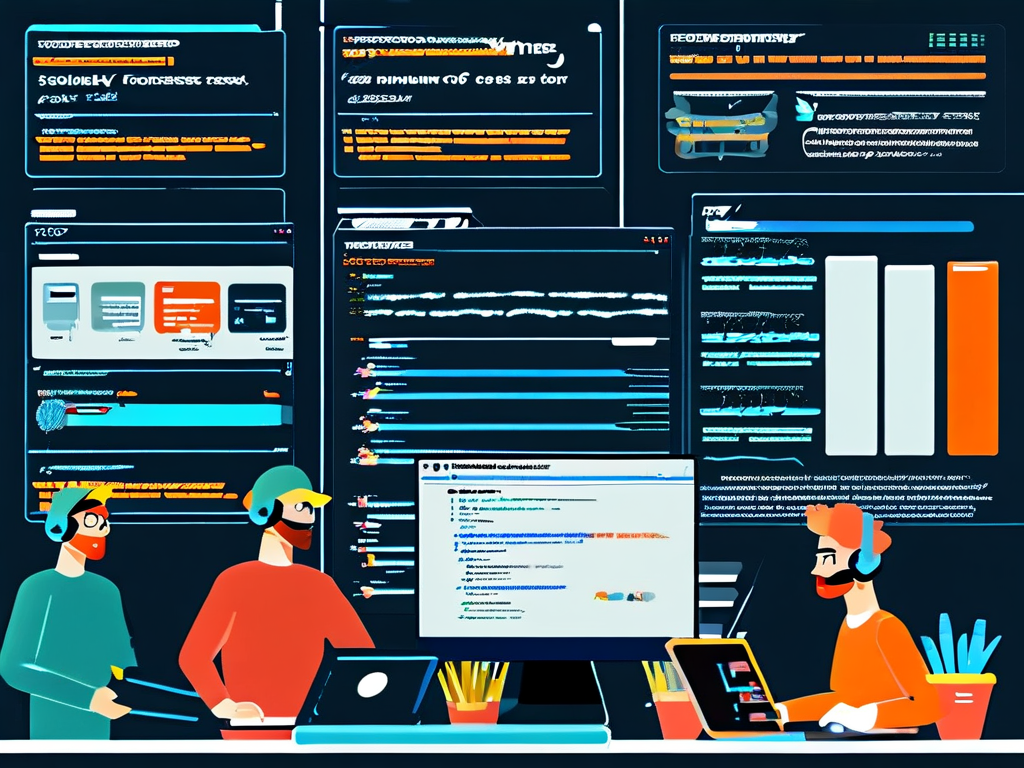Imagine your team pushing critical code updates late on a Friday, only to face a weekend consumed by manual deployment headaches, configuration mismatches, and frantic rollbacks. This scenario, once a dreaded norm for many development teams, is precisely where CloudEffect Automation steps in as a transformative force. It represents more than just a tool; it embodies a fundamental shift towards a streamlined, reliable, and efficient software delivery lifecycle. By automating the intricate steps involved in taking code from version control repositories to production environments, CloudEffect eliminates friction points, reduces human error, and accelerates the pace of innovation. It fundamentally changes the deployment game, turning a potential bottleneck into a competitive advantage.

The core challenge CloudEffect Automation addresses is the inherent complexity and risk associated with manual deployment processes. Traditionally, moving code involves numerous steps: pulling the latest version from the repository (like Git), installing dependencies, building the application, running various tests (unit, integration, security), configuring environment-specific settings (development, staging, production), deploying the build artifacts to servers or cloud platforms (AWS, Azure, Alibaba Cloud), executing database migrations if needed, performing smoke tests, and finally, orchestrating the switch to the new version, often requiring coordination between development, QA, and operations teams. Each manual step introduces a potential point of failure and consumes valuable engineering time. CloudEffect abstracts this complexity into a defined, repeatable, and auditable pipeline.
At its heart, CloudEffect provides a robust Continuous Integration and Continuous Deployment (CI/CD) pipeline framework. Developers commit code to a shared repository. CloudEffect automatically triggers the pipeline upon detecting changes. The initial stages typically involve:
- Code Checkout: Retrieving the latest codebase.
- Dependency Installation: Fetching libraries and tools (
npm install,pip install -r requirements.txt,mvn dependency:resolve). - Build: Compiling source code into executable artifacts (
mvn clean package,docker build -t myapp:latest .). - Automated Testing: Running a battery of tests to validate functionality and quality. Crucially, if any test fails, the pipeline halts, preventing faulty code from progressing further.
# Example CloudEffect Pipeline Snippet (Conceptual)
stages:
- name: Build
tasks:
- name: Install Dependencies
run: npm ci
- name: Build Application
run: npm run build
- name: Test
tasks:
- name: Run Unit Tests
run: npm test
- name: Run Integration Tests
run: npm run test:integration
- name: Deploy-to-Staging
tasks:
- name: Deploy Staging
uses: cloud-effect/deploy-action@v2
with:
environment: staging
cluster: my-staging-cluster
Upon successful passage through the testing gauntlet, CloudEffect facilitates the Continuous Deployment phase. This involves deploying the validated build artifacts to designated environments. CloudEffect excels in managing environment-specific configurations securely, ensuring the correct settings (database URLs, API keys, feature flags) are applied without exposing sensitive data. Deployment strategies like blue-green deployments or canary releases can be implemented seamlessly to minimize downtime and reduce risk. For instance, a canary release might route 5% of production traffic to the new version initially, monitoring key metrics closely before gradually ramping up.
The tangible benefits of adopting CloudEffect Automation are profound:
- Enhanced Reliability & Reduced Risk: Automated pipelines execute precisely the same steps every time, eliminating configuration drift and manual errors. Rollbacks become swift, standardized procedures if issues are detected post-deployment.
- Accelerated Release Velocity: Teams can ship features and bug fixes significantly faster – multiple times a day becomes feasible. This rapid iteration cycle is crucial for staying competitive and responsive to user needs.
- Boosted Developer Productivity: Freeing engineers from tedious, repetitive deployment tasks allows them to focus on high-value activities: writing code, designing features, and solving complex problems. Developer satisfaction often increases markedly.
- Improved Consistency & Compliance: Every deployment follows the same auditable path, ensuring consistency across environments (dev, test, staging, prod) and making compliance reporting far simpler.
- Faster Feedback Loops: Immediate feedback from automated tests within the pipeline allows developers to identify and fix issues early in the development cycle when they are less costly to resolve.
- Scalability: CloudEffect pipelines scale effortlessly to handle larger codebases, more complex architectures, and increased deployment frequency without proportional increases in operational overhead.
Implementing CloudEffect Automation effectively requires more than just tool adoption; it necessitates a cultural alignment with DevOps principles. Collaboration between development and operations teams is paramount to define the pipeline stages, establish quality gates, manage infrastructure as code (IaC), and share ownership of the deployment process. Security must be integrated throughout the pipeline (DevSecOps), incorporating vulnerability scanning and secrets management. Continuous monitoring of both the application in production and the pipeline's own performance is essential for ongoing optimization.
In essence, CloudEffect Automation is the engine that powers a modern, efficient software delivery process. It transforms deployment from a risky, manual chore into a predictable, automated strength. By embracing this capability, organizations unlock the potential for faster innovation cycles, higher quality software, reduced operational costs, and ultimately, a significant competitive edge in the digital marketplace. It’s not merely about deploying code faster; it’s about delivering value to users reliably and continuously, building trust and driving business success. The transition requires effort and cultural buy-in, but the payoff in terms of agility, stability, and team empowerment is undeniable.









